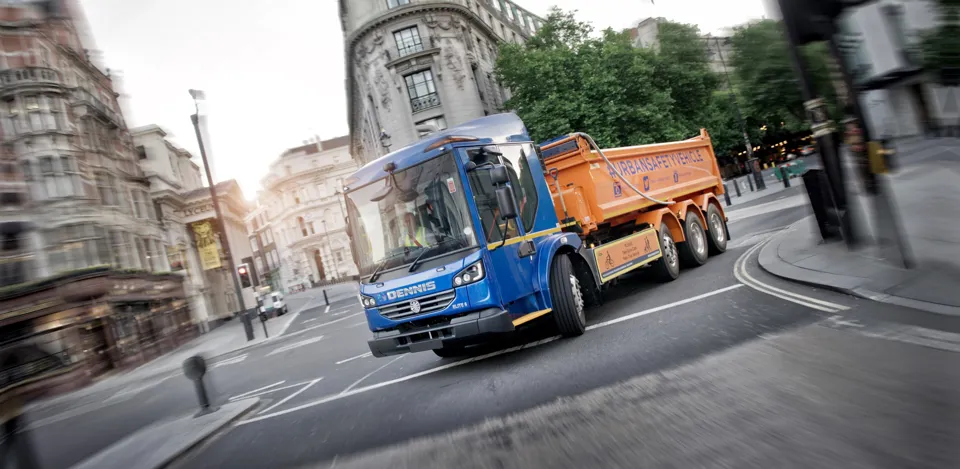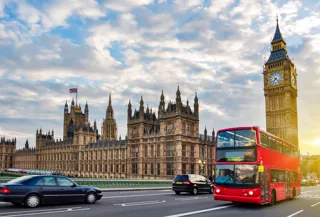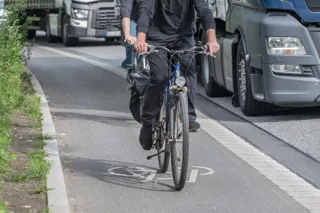Dawes Highway Safety is hoping to make the fitment of its flat panel side guard safety system mandatory to help reduce accidents with pedestrians and cyclists.
The PeoplePanel is an impact-tested panel that fits over an HGV’s side guard rails to reduce the risk of pedestrians and cyclists being pulled under the wheels in the event of an incident.
The product has been on sale for the past 18 months and the company has sold around 4,000 to fleet operators since launch. This is expected to increase to 6,000 by the end of this year.
Paul Holmes, PeoplePanel’s commercial director, said the company is due to meet with the Mayor of London, Sadiq Khan, in an attempt to get the fitment of flat panels made a legal requirement in London.
Holmes said: “Fitting these panels has already been identified as best practice and a lot of forward-thinking companies have already made changes to their vehicles.
“The difficulty now is in convincing those companies where they have done all they’re legally required to do and therefore won’t justify investing any more money in vehicle and pedestrian safety.
“It’s such a small percentage cost in relation to the cost of the vehicle. You would have change from £400.”
Big commercial fleet operators like Tarmac, Travis Perkins, Euromix and Martin Brower (McDonald’s distribution) have all rolled out PeoplePanels on their vehicles to improve safety.
London’s Safer Lorry Scheme, launched in 2015, requires the fitment of traditional side guards to protect cyclists from being dragged under the wheels in the event of a collision.
However, James Dawes, managing director of Dawes Highway Safety argues that, while those side rails help, there is a risk of a pedestrian or cyclist becoming entangled in them.
He explained: “The natural reaction for someone on a bike (involved in a collision) is to defend themselves and to put their hands out, but they can go in between the rails.
“That’s when a pendulum effect occurs. They get sucked under the lorry; as the person becomes entangled, their body acts like a pendulum and swings into the path of the wheels. A flat panel totally closes that side rail area so they can push themselves against it. Once they can push off, the
likelihood of them being hit be the rear wheels is reduced.”
The panel can also be customised to be company branded and can include a safety message, like the Fleet Operators Recognition Service (FORS)-approved “please take extra care near this vehicle”.
At the time of writing, of those customers that have had the panels fitted, there have been no incidents involving cyclists or pedestrians. Holmes said around 10 sets of panels have been replaced, but this has either been due to trucks turning corners and catching bollards, or a road collision with other vehicles.
He continued: “The messaging on the side for people to stay away from the panels in traffic, rather than grab onto them as some cyclists in London would do to stabilize themselves is working.
“Anecdotally, we have heard from drivers that have the panels fitted that cyclists are staying away from the sides of vehicles.”
PeoplePanels does offer a fitting service at an extra cost, but they can also be provided with a self-fit kit that most companies can use, particularly those that have their own technicians and service depots.
Holmes said the company recently took on a fitment job across two days where it fitted 30 vehicles.
John Garvey, senior transport manager at London-based Recycled Material Supplies, has added panels to its fleet of 76 vehicles.
He worked with the PeoplePanels team to fit panels to any new vehicles and to retrofit to vehicles already operating in London.
Garvey said: “We had an internal safety review of our fleet in November 2016 and took the decision to invest in fitting panels following that.
“Feedback from our drivers is that the presence of PeoplePanels has significantly increased the awareness of our vehicles to vulnerable road users.
“Anything that I can do that makes my driver’s job easier, is a step in the right direction. Fitting the panels has made our drivers feel more confident about driving the vehicles.”





















Login to comment
Comments
No comments have been made yet.